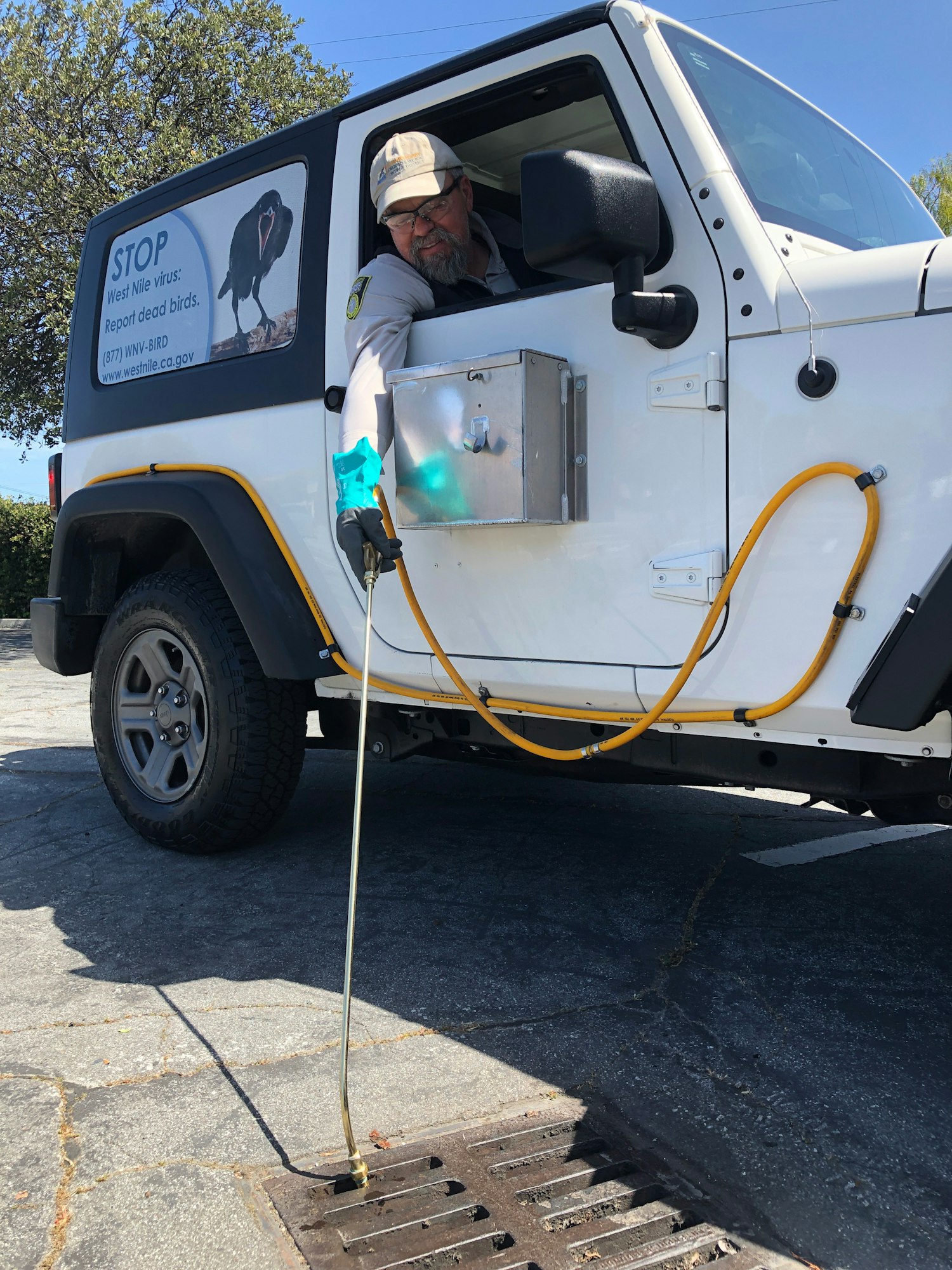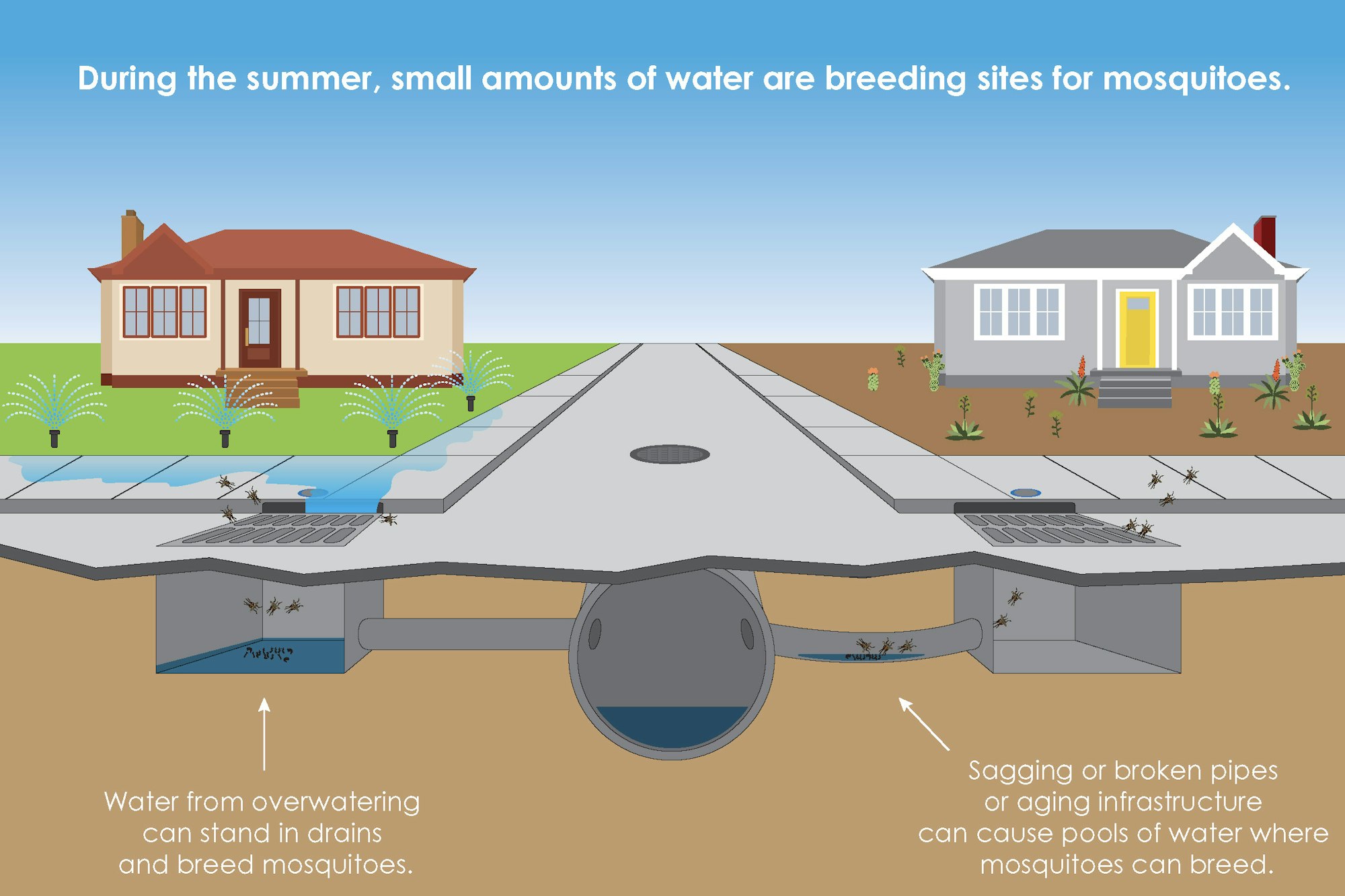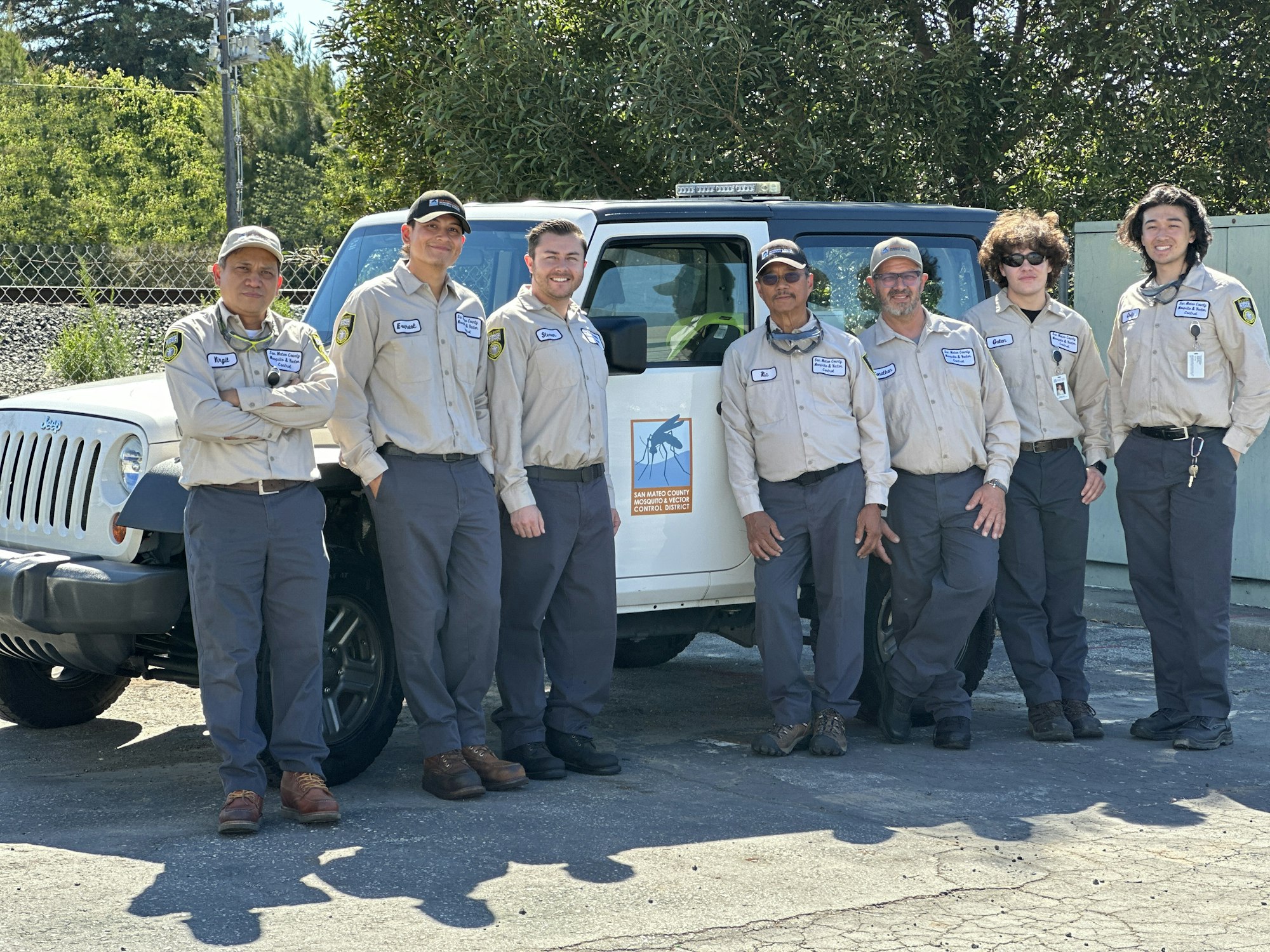Our White Jeeps

You may have seen one of our white Jeeps in your neighborhood during the drier months of the year. What are we doing, and why is it so important?
The short answer is that we are controlling mosquitoes breeding in storm drains, to keep our residents safe from West Nile virus. This is one of our most critical programs protecting San Mateo County residents from mosquito-borne disease and allowing us to enjoy comfortable evenings outdoors. For the longer answer, read on...
Cities and towns have many important pipes under their streets. Some of the pipes carry wastewater from our houses (think flushing your toilet or the drains of your shower, sinks, or washing machine) to wastewater treatment plants. Other pipes prevent street flooding by carrying rain water and other water from our streets - these pipes are called our stormwater system. The entry points to the underground stormwater pipes are the grates and curb inlets you see along the curbs between sidewalks and streets, as well as sometimes in parking lots and other areas. These grates and inlets are storm drains, meant to capture and divert rain and other water from flooding our streets.

In San Mateo County, most of the stormwater and runoff from our streets heads to the Bay or the Ocean. You may have noticed the "Drains to Bay" metal circles nearby storm drains and curb inlets. Protecting our stormwater system from pollutants and trash is important - so important that the County, cities, towns, and local governments partnered to create the Flows to Bay program to educate residents about preventing pollution to the Bay and Ocean - check out their website to learn more! In addition, several cities in the County have Adopt-a-Drain programs that residents can sign up for to help keep our drains free from trash. Check out the programs run by the City of Belmont, City of Brisbane, City of Burlingame, City of San Carlos, City of San Mateo, and City of South San Francisco.
An important part of preventing trash from entering storm drains are the grates on the top of the drains. However, there is also an important component at the very bottom of many of the drains. Many drains are designed so that the vertical column of the drain extends below the level of the horizontal pipe that carries the water away from the drain. This 'extra' space at the bottom can help keep heavier pieces of trash from being flushed out to the Bay or Ocean, and cities typically clean out the trash and debris from these on a regular basis. These spaces that are designed to 'catch' trash are called catch basins (this is the term our staff typically use to refer to these spaces that can also hold water and breed mosquitoes).

This little 'extra' space can hold water from the previous rainy season, or can also collect water during the dry summer months - for example water from overwatering lawns, washing cars, or other activities that result in water running into the storm drains along streets. These little underground puddles are an unfortunately excellent source of water for mosquitoes to lay their eggs. One mosquito can lay hundreds of eggs at a time - can you imagine how many mosquitoes could emerge from one storm drain? The 'common house mosquito' (its scientific name is Culex pipiens) is particularly good at breeding in these underground water sources; the common house mosquito is the mosquito species most likely to spread West Nile virus in San Mateo County. So every summer, we hire seasonal staff specifically to treat water in these drains to prevent mosquito larvae and pupae from growing in the water and emerging as adult mosquitoes that could contribute to West Nile virus transmission in our County.

One of our big jobs each summer is to prevent mosquitoes from breeding and growing in storm drain water. We use a product that creates an extremely thin oily layer on the surface of the water. The mosquito larvae and pupae are not able to break the surface tension and reach the air, and they suffocate. The product is most quickly and easily applied by using a custom-designed, right-hand drive vehicle. We currently maintain a fleet of Jeeps and hire 6 to 8 staff every summer for this work. Staff spend their days driving from drain to drain and using a specially-designed sprayer nozzle on the end of a long 'wand' connected by a hose to the product in the back of the Jeep. Staff place the nozzle into the grate or opening of the storm drain and apply the product inside the drain.

The product is not effective for very long, and so we re-apply every two weeks. To keep track of which drains need to be treated, we use a specially-designed mapping software application to map, track, and monitor each storm drain. The app will show points in different colors to indicate when the next treatment is needed. Each summer, we treat over 34,000 storm drains every two weeks. This amounts to more than 250,000 applications over the course of a summer. This number varies from year to year, depending mainly on when the winter rains end and when they start again in the fall. For example, in 2023, there were a few dry weeks in April when we started that summer's storm drain treatment work; then in early May, there was some rain, so we paused the work because the water was flowing and flushing the drain system during the rain.
Next time you see one of our white Jeeps, you'll know a bit more about how our seasonal staff help keep you safe and comfortable during the dry summer months!

Page last updated: October 20, 2025
